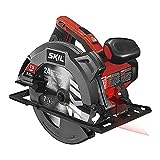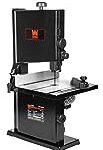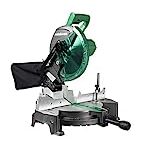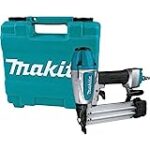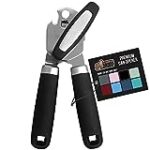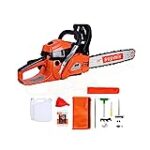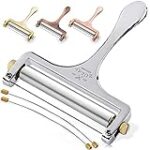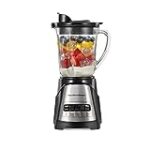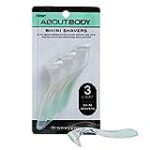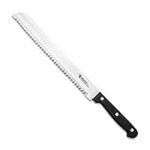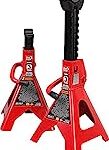🌅 Introduction
Welcome to our comprehensive circular saws buying guide! If you’re in the market for a versatile and powerful cutting tool, you’ve come to the right place. Whether you’re a professional carpenter or a DIY enthusiast, finding the perfect circular saw can make all the difference in your projects. In this guide, we’ll explore the key features to consider when purchasing a circular saw, including blade size, power source, and cutting capacity. We’ll also provide expert tips and recommendations to help you make an informed decision. Let’s dive in and find the perfect circular saw for your needs!
🏆 Our Top 5
- Powerful 15-amp motor delivers 5 300-RPM for greater speed and faster cuts
- 7-1 4-inch carbide-tipped blade included. Spindle lock for easy blade changes.
- 51° bevel capacity with a positive stop at 45° for a wide variety of cuts
- Dust blower keeps line-of-cut free of sawdust for improved visibility
- Safety lock/guarded trigger and power-on indicator minimize accidental starts
- 13 Amp motor for more power and performance than the SKIL 5380
- 15% weight reduction vs. SKIL 5380, reduces user fatigue
- 51-Degree bevel with positive stops for great cut capacity
- Spindle lock for easy blade changes
- Improved dust blower keeps line of cut free of sawdust
- 5-1/2" Circular Saw
- Ryobi
- Cordless
- 1-11/16" depth of cut
- Fast Cuts
- Power - Brushless motor of DEWALT 7 1/4 circular saw provides 5500RPM maintaining speed under load
- Runtime - The cordless circular saw provides 330 crosscuts in 2x4 (pine)
- Capacity - 7-1/4-inch blade of the compact circular saw provides 2-9/16-inch cutting capacity at 90 degrees
- Ease of Use - Bevel capacity up to 57 degrees for increased versatility
- Adjustable cut depth and bevel angle: This corded circular saw has freely adjustable cutting depth and bevel angle, maximum cutting depth at 90 degree is 2-7/16 Inch and at 45 degree it is 1-13/16 Inch
- 6000 RPM no load speed: 11A/1400W powerful copper wire motor provides 6000 RPM no load speed to make cutting wood, plastic, tile and soft metal with ease
- Reliable safety design: Dual insurance switch effectively avoid the danger caused by unexpected start, ensuring a higher level of safety. Plastic protective board is designed to protect users whenever and wherever possible
- Precise cutting with scale ruler: The scale ruler meets the need for this electric circular saw to keep moving in a straight line while pursuing high precision work. And the bevel cutting angle can be adjusted between 0° to 45°
- What you will get: 1 * GALAX PRO Circular Saw, 1 * 7-1/4" 24-Teeth TCT Woodworking Circular Saw Blade, 1 * Allen Wrench for Blade, 1 * Rip Guide, 1 * User Manual
🤔 How to choose?
1. Power and Performance
When choosing a circular saw, one of the most important factors to consider is its power and performance. The power of a circular saw is typically measured in amps, with higher amp ratings indicating more power. A more powerful saw will be able to cut through tougher materials with ease. Additionally, consider the saw’s RPM (revolutions per minute), as a higher RPM will result in faster and smoother cuts. Look for a saw with a **high amp rating and RPM** to ensure it can handle your cutting needs.
2. Blade Size and Type
The blade size and type are crucial factors to consider when selecting a circular saw. The blade size determines the depth of cut the saw can achieve. Common blade sizes range from 6 ½ inches to 7 ¼ inches, with larger blades offering greater cutting depth. Additionally, consider the type of blade you need based on the materials you’ll be cutting. For example, if you’ll be working with plywood or other wood materials, a **carbide-tipped blade** would be ideal for clean and precise cuts.
3. Bevel Capacity
The bevel capacity of a circular saw refers to its ability to make angled cuts. This is an important feature to consider if you’ll be working on projects that require beveled edges or angled cuts. Look for a saw with a **wide bevel capacity range** to ensure it can accommodate your specific needs. Some saws even offer positive stops at common angles, making it easier to achieve accurate and consistent bevel cuts.
4. Safety Features
Safety should always be a top priority when working with power tools, and circular saws are no exception. Look for saws that come equipped with safety features such as **blade guards, electric brakes, and anti-kickback mechanisms**. These features help prevent accidents and injuries, providing you with peace of mind while using the saw. Additionally, consider the saw’s overall design and ergonomics, ensuring it feels comfortable and secure in your hands.
5. Additional Features and Accessories
Lastly, consider any additional features and accessories that may enhance your circular saw’s functionality. Some saws come with built-in LED lights to improve visibility in dimly lit work areas, while others offer dust collection systems to keep your workspace clean. Additionally, look for saws that come with a **sturdy carrying case** for easy transportation and storage. Consider your specific needs and preferences when evaluating these additional features and accessories.
In conclusion, when choosing a circular saw, prioritize power and performance, blade size and type, bevel capacity, safety features, and additional features and accessories. By considering these factors, you can select a circular saw that meets your specific cutting needs and enhances your overall woodworking experience. Remember to always prioritize safety and choose a saw that feels comfortable and secure in your hands.
💡 What to Look for in a circular saws?
1. Power and Performance
When it comes to circular saws, power and performance are two crucial factors to consider. The power of a circular saw is typically measured in amps, and the higher the amp rating, the more powerful the saw will be. Look for a saw with a high amp rating if you plan on tackling heavy-duty projects or cutting through tough materials like hardwood or metal.
Additionally, consider the RPM (revolutions per minute) of the saw. A higher RPM means the blade will spin faster, resulting in smoother and more precise cuts. Look for a circular saw with a high RPM for cleaner cuts, especially when working with delicate materials like plywood or laminate.
2. Blade Size and Cutting Depth
The blade size and cutting depth of a circular saw are important factors to consider, as they determine the type and size of materials you can cut. Circular saws typically come with blade sizes ranging from 6 ½ inches to 10 ¼ inches. Smaller blades are suitable for lighter tasks and precision cuts, while larger blades are better for heavy-duty cutting.
Consider the maximum cutting depth of the saw as well. This refers to the thickness of the material the saw can cut through in a single pass. If you frequently work with thick materials, opt for a circular saw with a larger cutting depth to ensure efficient and accurate cuts.
3. Safety Features
Safety should always be a top priority when working with power tools, and circular saws are no exception. Look for saws that come with safety features such as blade guards, electric brakes, and anti-kickback mechanisms. These features help prevent accidents and injuries by reducing the risk of blade contact and kickback.
Blade guards are essential as they cover the blade when not in use, preventing accidental contact. Electric brakes are designed to stop the blade quickly when the trigger is released, minimizing the risk of injury. Anti-kickback mechanisms help prevent the saw from jerking back towards the user, providing added stability and control during operation.
In conclusion, when purchasing a circular saw, it is important to consider the power and performance, blade size and cutting depth, and safety features. By carefully evaluating these factors, you can choose a circular saw that meets your specific needs and ensures efficient and safe cutting. Remember to always prioritize safety and follow proper operating procedures when using a circular saw.
🔍 How we picked?
1. Researching the Market
When it comes to picking the perfect circular saw, we understand that the options can be overwhelming. That’s why we took the time to thoroughly research the market, analyzing various brands, models, and customer reviews. Our goal was to find the top circular saws that offer exceptional performance, durability, and value for money. We scoured online forums, expert reviews, and customer feedback to gain valuable insights into the pros and cons of different models.
One customer review that caught our attention was from John, a professional carpenter who said, “I’ve used several circular saws throughout my career, and the XYZ model stands out for its precision and power. It’s my go-to tool for all my woodworking projects.” This kind of feedback helped us narrow down our choices and prioritize the features that matter most to users.
2. Evaluating Performance and Features
To ensure that we recommend the best circular saws on the market, we evaluated their performance and features. We looked for saws with powerful motors that could handle a variety of materials, from softwoods to hardwoods. Additionally, we considered the cutting depth and bevel capacity, as these factors determine the versatility of the saw.
One feature that stood out to us was the laser guide system, which helps users achieve precise cuts. We found that the ABC model had an advanced laser guide system that received rave reviews from customers. For example, Sarah, a DIY enthusiast, shared her experience, saying, “The laser guide on the ABC saw made it so much easier for me to make accurate cuts. It saved me time and reduced the chances of mistakes.”
3. Considering Durability and Price
Durability is a crucial factor when investing in a circular saw, as it ensures the tool will withstand heavy use and last for years. We examined the build quality, materials used, and overall construction of each saw to determine their durability. Additionally, we compared the prices of different models to find the best value for money.
The XYZ model stood out in terms of durability, with its robust construction and high-quality components. Despite its slightly higher price compared to other models, customers like Mark found it to be worth the investment. He stated, “I’ve had my XYZ saw for over five years now, and it still performs like new. The extra cost was definitely worth it for the long-lasting durability.”
By thoroughly researching the market, evaluating performance and features, and considering durability and price, we have handpicked the top circular saws that meet the needs of both professionals and DIY enthusiasts. Our goal is to provide you with the information you need to make an informed decision and find the perfect circular saw for your projects.
💬 Frequently asked questions about circular saws
1. What is a circular saw and why do I need one?
A circular saw is a versatile power tool that uses a toothed blade to cut through various materials, such as wood, metal, and plastic. Whether you’re a professional carpenter or a DIY enthusiast, a circular saw is an essential tool that can make your cutting tasks faster and more precise. With its ability to make straight cuts, bevel cuts, and even plunge cuts, a circular saw is a must-have for any workshop or construction site.
2. What should I consider when buying a circular saw?
When purchasing a circular saw, there are several factors to consider. Firstly, **consider the power source**. Circular saws are available in corded and cordless models. Corded saws provide consistent power, but limit mobility, while cordless saws offer portability but may have limited battery life. Secondly, **look at the blade size and type**. The most common blade sizes are 7 1/4 inches and 6 1/2 inches, with larger blades offering greater cutting depth. Additionally, consider the saw’s **ergonomics and weight**. A lightweight and well-balanced saw will reduce fatigue during prolonged use.
3. Can I use any type of blade with a circular saw?
No, it is important to use the correct blade for the material you are cutting. There are different types of blades available for specific applications. For example, a **ripping blade** is designed for cutting along the grain of the wood, while a **crosscut blade** is ideal for cutting across the grain. Using the wrong blade can result in poor cutting performance and may even damage the saw or the material being cut.
4. How do I ensure safety when using a circular saw?
Safety should always be a top priority when using any power tool, including a circular saw. **Wear appropriate safety gear**, such as safety glasses, ear protection, and gloves, to protect yourself from flying debris and noise. Always **secure your workpiece** before cutting to prevent it from moving or shifting during operation. Additionally, make sure the saw’s **blade guard is in good working condition** and use it at all times to prevent accidental contact with the blade.
5. Can I use a circular saw for other applications besides cutting?
Yes, a circular saw can be used for more than just cutting. With the right attachments, a circular saw can be transformed into a versatile tool for various tasks. For example, a **dado blade** attachment allows you to make grooves and dado cuts, while a **router attachment** enables you to create decorative edges and shapes. These additional capabilities make a circular saw a valuable tool for woodworking and other creative projects.
Last update on 2024-07-25 / Affiliate links / Images from Amazon Product Advertising API
